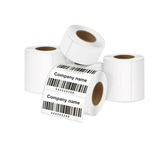Minister for Health Sussan Ley announced on 3 September 2016 that from September 2016 new regulations would be introduced to improve information about medicines on labels.
"Regulations for medicine labels in Australia have not been updated for more than 15 years and are not aligned with international practices. The current labelling can lead to poor medicine use and a number of medicine safety concerns," Minister Ley said.
"The new medicine labelling requirements will give Australian consumers clearer and more meaningful information about the medicines they buy and will provide Australian consumers with the clarity they deserve.
"Under the changes consumers will be able to easily identify the active ingredients in medicines because they will be more prominent and also placed in a consistent location on the label. In addition, to protect people with serious allergies, substances from crustaceans, fish, eggs, soya, milk and tree nuts must now be declared for all types of medicines.
"These changes will also require that a space must be included for pharmacists to apply dispensing labels to prescription medicines."
Ley said the medicine label changes will gradually appear on prescription medicines as well as medicines bought at pharmacists or in other retail outlets.
"Many higher risk over-the-counter medicines will be required to include a health information panel with details of active ingredients, uses, warnings and directions for use. This will provide consistency so consumers can find important information about their medicines," she said.
Ley said the changes have been initiated following extensive industry, health care professional and public consultations over the past five years by the Therapeutic Goods Administration (TGA) which identified safety concerns with the current labelling of medicines.
These included:
- Lack of awareness of the active ingredients within medicines, leading to accidental overdose when taking multiple medicines at once, as well as dispensing errors;
- Poor readability of medicine labels due to inconsistent placement of information, the use of complex language and legibility issues.
- Poor outcomes associated with taking a medicine due to difficulties in following directions for use or identifying advisory statements such as contraindications; and
- The potential for administration of the wrong medicine arising from similarities in medicine names and branding.
As a result two new Therapeutic Goods Orders for medicine labels – one for prescription medicines and the other for non-prescription medicines – have been developed and will come into effect in September 2016.
The head of the TGA, Professor John Skerritt, said improved medicine labels will assist in the quality use of medicines.
"New minimum text heights requirements for the names and quantities of active ingredients will improve the readability of labels for higher risk medicines," Professor Skerritt said.
"To allow easier identification by both consumers and medical practitioners, this information must also be placed adjacent to or below the name of the medicine.
"Critical health information to ensure safe use of the medicine must be formatted in tables for high risk medicines that are purchased directly by consumers. This also assists in making the information easy to identify and read."
Information for consumers and health professionals can be found on the TGA website.





